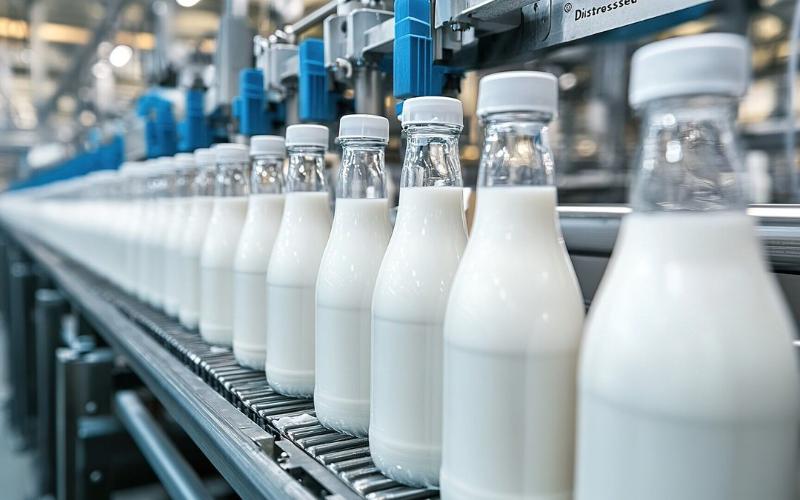USDA Strengthens H5N1 Monitoring and Testing Measures for Dairy Cattle
Source: DairyNews.today
The U.S. Department of Agriculture (USDA) has announced plans to expand its monitoring and testing efforts for H5N1 avian influenza, focusing on dairy cattle as part of a new tiered approach.

In collaboration with state veterinarians, the USDA's Animal and Plant Health Inspection Service (APHIS) will implement an enhanced testing strategy, building on actions taken since the virus was first identified in dairy herds earlier this year. The initiative aims to improve biosecurity measures and provide critical data to aid state-led risk-reduction efforts for farm workers.
Since H5N1’s detection in dairy cattle in March 2024, the USDA has implemented a range of containment measures, including a Federal Order in May requiring H5N1 testing prior to interstate cattle movement. This order has been effective in controlling spread, reducing affected states from 14 to just two within the last month. However, USDA emphasizes that further monitoring is needed to reinforce biosecurity and safeguard livestock.
Leveraging proven methods like bulk milk testing, which previously aided in eradicating brucellosis, USDA will work with regions and states prepared to support a nationwide expansion of this testing model. Colorado’s successful bulk milk testing campaign in two counties, which found no H5N1 presence in recent statewide tests, serves as a model for broader implementation. The USDA’s enhanced plan includes regional bulk milk sampling and, when necessary, targeted farm-level testing until dairy herds are declared H5N1-free. Additional guidance documents are expected shortly.
The USDA underscores the critical role of biosecurity and encourages farms nationwide to adopt preventive practices, even if H5N1 has not been detected locally. Data suggests that H5N1 can spread via equipment, people, and materials moving between farms, including from dairy to poultry facilities. USDA’s April 2024 Federal Order, mandating cattle testing prior to interstate travel, has effectively limited the virus's spread, but the agency is urging herd owners to utilize producer support programs that cover biosecurity, PPE, and veterinary costs.
Alongside enhanced monitoring efforts, the USDA is fast-tracking H5N1 vaccine development for dairy cattle, with two vaccine candidates currently in field trials. In collaboration with CDC, the USDA reports that there is no current evidence of an increased risk of H5N1 transmission from animals to humans or between humans.
In addition to the dairy sector measures, USDA and the Oregon Department of Agriculture have confirmed the first H5N1 detection in U.S. swine on a non-commercial farm in Oregon, underscoring the virus’s cross-species impact. While CDC maintains that public risk remains low, the USDA continues to coordinate with federal agencies like CDC and FDA to protect both livestock health and the nation’s food supply.
Since H5N1’s detection in dairy cattle in March 2024, the USDA has implemented a range of containment measures, including a Federal Order in May requiring H5N1 testing prior to interstate cattle movement. This order has been effective in controlling spread, reducing affected states from 14 to just two within the last month. However, USDA emphasizes that further monitoring is needed to reinforce biosecurity and safeguard livestock.
Leveraging proven methods like bulk milk testing, which previously aided in eradicating brucellosis, USDA will work with regions and states prepared to support a nationwide expansion of this testing model. Colorado’s successful bulk milk testing campaign in two counties, which found no H5N1 presence in recent statewide tests, serves as a model for broader implementation. The USDA’s enhanced plan includes regional bulk milk sampling and, when necessary, targeted farm-level testing until dairy herds are declared H5N1-free. Additional guidance documents are expected shortly.
The USDA underscores the critical role of biosecurity and encourages farms nationwide to adopt preventive practices, even if H5N1 has not been detected locally. Data suggests that H5N1 can spread via equipment, people, and materials moving between farms, including from dairy to poultry facilities. USDA’s April 2024 Federal Order, mandating cattle testing prior to interstate travel, has effectively limited the virus's spread, but the agency is urging herd owners to utilize producer support programs that cover biosecurity, PPE, and veterinary costs.
Alongside enhanced monitoring efforts, the USDA is fast-tracking H5N1 vaccine development for dairy cattle, with two vaccine candidates currently in field trials. In collaboration with CDC, the USDA reports that there is no current evidence of an increased risk of H5N1 transmission from animals to humans or between humans.
In addition to the dairy sector measures, USDA and the Oregon Department of Agriculture have confirmed the first H5N1 detection in U.S. swine on a non-commercial farm in Oregon, underscoring the virus’s cross-species impact. While CDC maintains that public risk remains low, the USDA continues to coordinate with federal agencies like CDC and FDA to protect both livestock health and the nation’s food supply.














